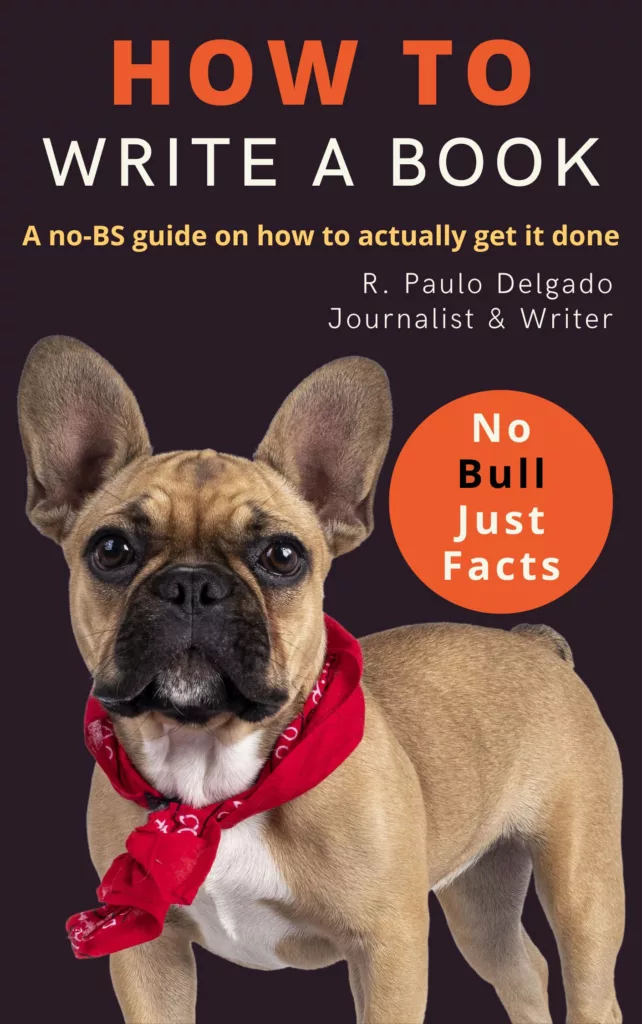If you’ve decided to take the plunge into self-publishing, you’ve likely realized that writing the book was just the first step in a long and exciting journey.
Rest assured that even professionally published authors get told to market their own books, and many of them don’t know how to.
Marketing for self-publishers is easy if you know what works and what doesn’t. Rule Number One is to not spend more money than you’re willing to lose. Rule Number Two is to market for the right reason: To build a readership and gain fans.
What is Book Marketing for Self-Publishers?
Marketing for self-publishers is the process of promoting and selling your self-published book. It encompasses everything from identifying your target audience to crafting compelling content that will attract and retain these readers. The goal is to raise awareness about your book, generate interest, and ultimately drive book sales.
How is Book Marketing for Self-Publishers Different?
Book marketing for self-publishers is not really that different from professionally published authors. Pro-published authors might have easier access to in-person marketing, such as large book signings, but we all have access to the internet and social media.
Many self-published authors marketed their own books and became successful, such as Colleen Hoover and Hugh Howey. After that, they became professionally published authors.
It’s a misconception that pro-published authors have a massive marketing team behind them that markets their books all year round. That might be true for Stephen King, but the bulk of authors must market their books off their own steam.
Book Promotion, Advertising, and Marketing: What’s the Difference?
Understanding the difference between promotion, advertising, and marketing can help you develop a more effective strategy for your self-published book.
Marketing is the greater term that encompasses both advertising and promotion. It refers to any action that puts something on the market.
Promotion can refer to specific discounts or to actions taken to make people aware of your product. It can include advertising online or holding a placard up on the street that screams, “BUY MY BOOK!”
Advertising is a specific branch of promotion where you pay a company to display an ad for your product. Several advertising options exist for online advertising, and the type of platform you choose depends on the genre your book is in.
Tips for Effective Book Marketing for Self-Publishers
Effective book marketing for self-publishers requires strategic planning, creativity, and a bit of hustle. Here are some tips to get you started:
Author Website

Your author website serves as your digital headquarters, a central hub where readers, prospective buyers, and even literary agents can learn more about you and your work. It’s more than just a portfolio of your books; it’s a platform where you can establish your brand, build a community, and engage with your audience on a deeper level.
A well-designed author website should be clean, professional, and reflective of your personal brand as a writer. It should be easy to navigate with clear calls-to-action (e.g., “Buy the Book,” “Join the Mailing List“). Make sure it includes crucial pages like a ‘Books’ section featuring your work, an ‘About’ page introducing yourself, and a ‘Contact’ page for readers or professionals to reach out to you.
Regularly posting blog articles is a great way to keep your website fresh, provide value to your visitors, and showcase your writing skills. These could be updates on your writing journey, tips on a topic you’re passionate about, or behind-the-scenes insights into your books.
Engagement is key to building a loyal readership. Consider adding a comment section under your blog posts or a forum where readers can discuss your books. Respond to comments and engage with your readers to show that you value their opinions and support.
Author SEO
SEO is a huge topic that requires extensive study to get right. But the basics of SEO have remained the same over the years.
Fortunately, many popular website platforms such as WordPress and Squarespace implement these basics without you having to know anything about them.
As an author, focus on creating a website with one of these platforms, and then provide regular content in the form of useful blogs that people enjoy reading. There’s a lot more to SEO, but that’s a great place to start.
The trick is to do it regularly.
Book Trailers

Book trailers are a great way to get people interested in your book. They’re typically 30 seconds long, and consist of awesome graphics, catchy text, and powerful music.
A book trailer is more than just a summary of your book. It’s a creative piece that should capture the essence of your story and evoke the emotions you want your readers to experience.
Don’t give too much away in your trailer, but say enough to get people interested.
You can make your own Book Trailer using software such as Cyberlink Powerdirector, Adobe Premiere Pro, or even a web editor. If you have the budget, we recommend hiring a pro to do it for you.
Giveaways and Freebies
Giveaways are a great way to build your mailing list. Using something like Rafflecopter, you can get people to like your website or sign up for your mailing list in exchange for some swag or a free copy of your book.
Free Book Strategy
The free book strategy is a tried-and-true method for attracting readers, especially for authors who write series. Many successful series got there because of a permanently free (or permafree) Book One that people download, and which hooks them into the series.
Opinions differ, but some authors say that creating a cliffhanger at the end of each book is a great way to get readers to stay with you. Even Charles Dickens used to do this.
Mailing List
In the world of marketing for self-publishers, a mailing list is worth its weight in gold. Unlike social media, where your posts can get lost in a sea of content, an email lands directly in a reader’s inbox. It’s a direct line of communication that allows you to engage with your readers on a more personal level.
A mailing list is more than just a way to announce new releases. You can use it to share exclusive content, offer special deals, and even ask for feedback on upcoming projects. It’s also a great way to keep your readers engaged between releases.
Building a mailing list takes time, but the effort is well worth it. Start by offering something of value in exchange for signing up, like a free chapter or an exclusive short story. And once people have joined your list, make sure to provide valuable content regularly to keep them engaged.
Social Media Strategy
It’s important to pick the social media platform that is best suited to your target market. Trying to manage multiple platforms can become overwhelming if you don’t have a team behind you. And paying a team to manage your social media when you’re small doesn’t really make sense.
Facebook is usually the “right” answer for many books, even though other platforms might be more popular. Even Business Books sometimes get more traction on Facebook, because you can create communities surrounding the topic of your book. But, of course, LinkedIn might be better for you for a business book.
Do your research and pick one platform to focus on. When you get more widely known, you can focus on other platforms as well.
Book Covers

They say never to judge a book by its cover, but let’s be honest: we all do it. A book cover is the first thing potential readers see, and it can significantly influence their decision to pick up your book. That’s why it’s crucial to invest time and resources into creating a cover that not only captures the essence of your book but also appeals to your target audience.
Your book cover should communicate the genre and tone of your book at a glance. If it’s a dark, gritty thriller, the cover should reflect that. If it’s a lighthearted romance, the cover should convey that feel.
Consider hiring a professional cover designer if it’s within your budget. If you’re designing it yourself, spend time researching successful covers in your genre to understand what works and why.
Pre-Launch and Beyond: The Phases of Marketing
Effective marketing for self-publishers isn’t a one-and-done task. It’s an ongoing process that starts even before your book is published.
Pre-Launch Marketing
This phase is about building anticipation for your book. Share snippets, cover reveals, or behind-the-scenes content on your website and social media platforms. Start building your mailing list and engage with your audience by sending out newsletters. You could also consider setting up pre-orders for your book. This not only generates early sales but also boosts your book’s ranking on launch day.
Launch Phase Marketing
This is when you pull out all the stops. Host a virtual book launch event, schedule interviews or guest posts on popular blogs, and ramp up your social media promotion. If budget allows, consider paid advertising on platforms where your target readers hang out.
Post-Launch Marketing
Marketing doesn’t stop once your book is out. Keep the momentum going by continuing to engage with your readers, exploring new promotional opportunities, and leveraging positive reviews. Remember, word-of-mouth is one of the most powerful marketing tools for a self-published author.
Long-Term Marketing
This includes strategies to keep your book in front of readers long after the initial launch buzz has died down. Regularly update your blog, keep your website SEO-optimized, continue building your mailing list, and consider strategic price promotions or bundle deals.
Conclusion
Marketing for self-publishers might seem daunting, but with strategic planning and persistent execution, it can be a rewarding journey. Remember that marketing is about more than just selling books—it’s about building relationships with your readers, sharing stories that matter, and making your mark in the literary world. With these tips in hand, you’re well on your way to marketing success for your self-published book. Good luck, and happy marketing!



